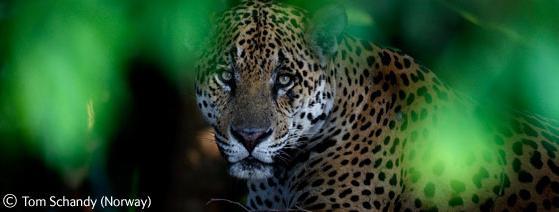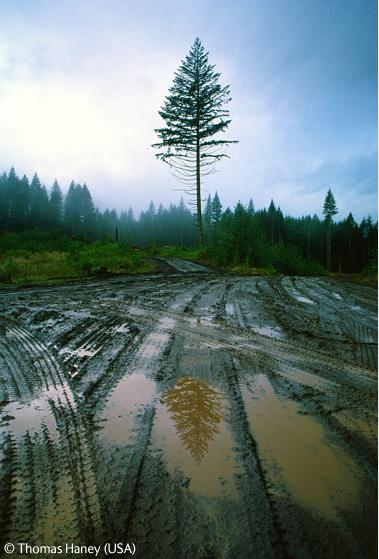Wildlife Photography Awards
Sunday, April 25th, 2010by Editor 20100425.
International Wildlife Photography Exhibition 2010
 Winning Wildlife Photograph for 2010, by Tom Schandy
Winning Wildlife Photograph for 2010, by Tom Schandy
Concurrently on exhibition at both the National History Museum in London and at the Australian Museum in Sydney is a brilliant display of wildlife photography, that recognises the Wildlife Photographer of the Year under a number of international awards.
On exhibition is not only the winning wildlife photographs but also those of the runners-up and the highly commended photographic entries. Entries have also been grouped into age groups so that children and young adults of differing age bracket categories also have their own competition award. This provides an excellent incentive for young people to take a special interest in wildlife and wildlife photography, for it is in our young peopke that the future of wildlife species will be utterly dependent to survive extinction.
The Editor had the opportunity to visit the exhibition held at the Australian Museum in Sydney yesterday and although this current exhibition is all but over, a visit by everyone should be an annual event. The experience is beautiful, inspiring, educational if not a touch sad when realising many of these photos may be of future extinctions. That they are in a museum is a wake up call to humanity and its morality.
Wildlife photography, the wildlife photography awards and the public exhibition of the entrants in each year’s competition contribute vitally in raising mainstream awareness of the plight of threatened wildlife, of poaching, the destruction of their habitats and the increasing risks of wildlife extinctions.
^Australian Museum, Sydney ^Natural History Museum, LondonWildlife Photographer of the Year Award 2010
Exhibited at Australian Museum, Sydney‘Audience Type: General Event Type: Special exhibition Opens: 24 December 2009 Closes: 26 April 2010 Location: Level G, Special Exhibition Space Experience the power, mystique and beauty of nature. See more than 90 dramatic images, from big cats fighting to silent icy landscapes, all in the Wildlife Photographer of the Year 2009 exhibition. With over 43,000 competition entries from 94 countries across the globe, this is a selection of the most powerful images capturing wildlife and nature. Photography categories include:
-
- Gerald Durrell Award for Endangered Wildlife
- One Earth
- Animals in Their Environment
- Behaviour: Birds
- Behaviour: Mammals
- Behaviour: All Other animals
- The Underwater World
- Animal Portraits
- Urban and Garden Wildlife
- Creative Visions of Nature
- In Praise of Plants
- Nature in Black and White
- Wild Place
- 10 years and under
- 11-14 years
- 15-17 years.’
Exhibition Owned jointly by:
Exhibition Patron:
Gerald Durrell Award for Endangered Wildlife
‘This award commemorates the late Gerald Durrell’s work with endangered species and his long-standing involvement with the competition. The award is given to the most memorable image and that which captures the unique character or spirit of the subject. The species featured must be officially listed in the 2008 IUCN Red List of Threatened Species as critically endangered or endangered, vulnerable or near threatened at an international or national level.’Winner
Tom Schandy (Norway)‘The look of a jaguar’In a small, protected area of swamp-forest in the western area of the Pantanal wetland, in Mato Grosso, Brazil, jaguars still roam free from human harassment. They’re notoriously difficult to see, and pawprints are as lucky as most people get. Along the riverbanks, though, it’s possible to spot them. When Tom took a boat down the Rio Paraguay, he saw four jaguars in three days. This male had picked a slightly concealed spot where he could watch for prey such as capybara. Tom observed him for an hour. ‘He was totally calm, even though he was aware of us.’ At sunset, the jaguar rose, yawned and scent-marked. Then he faded back into the dense forest. [Camera equipment used: Canon EOS-ID Mark III + 500mm f4 lens; 1/250 sec at f4; ISO 400; beanbag]
 This photograph is available to buy as an official print by going to the National History Museum website
This photograph is available to buy as an official print by going to the National History Museum website
Runner-Up
Juan Carlos Muñoz, (Spain) ‘Elephant onlooker’One Earth Award
‘This award highlights conservation issues or actions and the interaction between humans and the natural world. Images must demonstrate the power and resilience of our planet and its impact on us. Whether graphic or symbolic, each picture must be thought provoking, memorable and encourage respect or concern for our natural world.’Winner
Thomas Haney (United States of America)‘The lone fir’
 This photograph is available to buy officially as a print from visiting the National History Museum
This photograph is available to buy officially as a print from visiting the National History Museum
‘It was late afternoon when Thomas came upon this scene outside Forks, Washington, while documenting old-growth logging in the Pacific Northwest. Loggers had left a single Douglas fir standing in a clearcut area, perhaps to help reseed the area for future logging. ‘As I walked towards it on the muddy road, criss-crossed with the tracks of logging trucks, I saw the reflection in the puddle,’ says Thomas. ‘It was a powerful image, reminding me of the towering forest that once stood here,’ he says. This area has been logged before, so this tree is likely to have been planted as part of a mono-age crop, vastly different from the multilayered forests that once blanketed the region. ‘Clearcutting has long been a focal point of the environmental movement, and while it seems to be falling out of favour in North America, it’s still the preferred method around the world.’
[Camera equipment used: Minolta Maxxum 7 + Minolta 20-35mm f3.5-4.5 lens, + .3 graduated-split neutral-density filter; 2 sec at f16; Fujichrome Velvia 50].
Highly Commended
Andy Rouse (United Kingdom)Stalking the tiger
‘Andy and his guide Dicky Singh followed the fresh pug marks down the track. When they caught up with the tiger, they discovered it was Machali, a female very familiar to Dicky. Indeed, she’s something of a local celebrity in Ranthambore National Park. It wasn’t long before jeep-loads of tourists drew up to admire her. The drivers kept a respectful distance, but Machali is well used to such attention from the wildlife paparazzi. It has been suggested that Machali has contributed about $10 million to the local economy. Andy believes that ‘if we are to save this wonderful cat, then it has to have an economic value to a local community, and that’s what I wanted to show with this picture.’ [Camera equipment used: Nikon D3 + Nikon 70-200mm lens; 1/250 sec at f5.6; ISO 800.]
For more photos visit:
^Australian Museum, Sydney
^Natural History Museum, London
© The Habitat Advocate Public Domain













